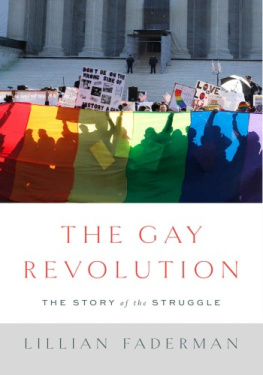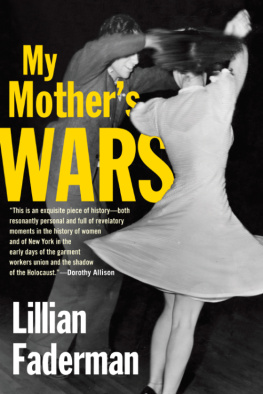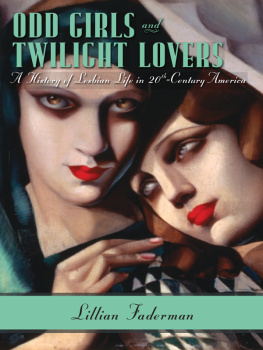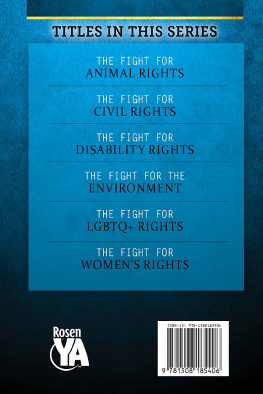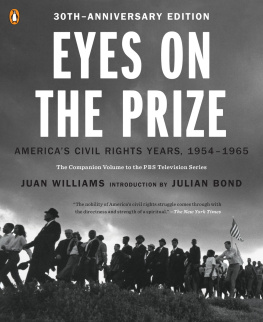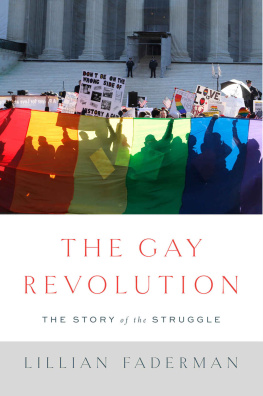Annotation
The sweeping story of the struggle for gay and lesbian rightsbased on amazing interviews with politicians, military figures, and members of the entire LGBT community who face these challenges every day.The fight for gay and lesbian civil rightsthe years of outrageous injustice, the early battles, the heart-breaking defeats, and the victories beyond the dreams of the gay rights pioneersis the most important civil rights issue of the present day. In the most comprehensive history to date of Americas gay-rights movement (The Economist), Lillian Faderman tells this unfinished story through the dramatic accounts of passionate struggles with sweep, depth, and feeling.The Gay Revolution begins in the 1950s, when gays and lesbians were criminals, psychiatrists saw them as mentally ill, churches saw them as sinners, and society victimized them with hatred. Against this dark backdrop, a few brave people began to fight back, paving the way for the revolutionary changes of the 1960s and beyond. Faderman discusses the protests in the 1960s; the counter reaction of the 1970s and early eighties; the decimated but united community during the AIDS epidemic; and the current hurdles for the right to marriage equality.A compelling read of a little-known part of our nations history, and of individuals whose stories range from heart-wrenching to inspiring to enraging to motivational (Chicago Tribune), The Gay Revolution paints a nuanced portrait of the LGBT civil rights movement. A defining account, this is the most complete and authoritative book of its kind.
Thank you for downloading this Simon & Schuster eBook.
Join our mailing list and get updates on new releases, deals, bonus content and other great books from Simon & Schuster.
CLICKHERETOSIGNUP
or visit us online to sign up at
eBookNews.SimonandSchuster.com
CONTENTS
Prologue
A Brief History of Changing Terminology
PART 1: SCAPEGOATS
1. Lawbreakers and Loonies
2. America Hunts for Witches
3. No Army of Lovers: Toward a Homosexual-Free Military
4. America Protects Its Youngsters
PART 2: THE HOMOPHILES
5. Mattachine
6. The Daughters
7. Jousts with the Four Horsemen
PART 3: REVOLTS BEFORE THE REVOLUTION
8. Slivers of Space and Justice
9. Throwing Down the Gauntlet
10. The Homosexual American Citizen Takes the Government to Court
PART 4: EARTHQUAKE: THE STONEWALL YEARS
11. The Riots
12. Say It Proudand Loud: New Gay Politics
13. Less Talk and More Action: The Gay Activists Alliance
14. A Parallel Revolution: Lesbian Feminists
PART 5: A PLACE AT THE TABLE
15. Dressing for Dinner
16. How Gays and Lesbians Stopped Being Crazies
17. The Culture War in Earnest
PART 6: HOW ANITA BRYANT ADVANCED GAY AND LESBIAN CIVIL RIGHTS
18. Enter, Anita
19. How to Lose a Battle
20. Grappling with Defeat
21. Learning How to Win
PART 7: ASHES AND PHOENIXES
22. Of Martyrs and Marches
23. The Plague
24. Family Values
PART 8: DEMANDING TO SERVE
25. New Gays and Lesbians Versus the Old Military
26. Dont Ask, Dont Tell, Dont Serve
27. Get Dont Ask, Dont Tell Done!
PART 9: LGBT AMERICAN CITIZENS
28. How Lesbians and Gays Stopped Being Sex Criminals
29. The First Law in American History That Begins the Job of Protecting LGBT People
30. A Forty-Year War: The Struggle for Workplace Protection
PART 10: WHAT JUSTIFICATION COULD THERE POSSIBLY BE FOR DENYING HOMOSEXUALS THE BENEFITS OF MARRIAGE?
31. The Status That Everyone Understands as the Ultimate Expression of Love and Commitment
32. Getting It Right, and Wrong, in the West
33. The Evolution of a President and the Country
Epilogue
Acknowledgments
Photographs
Photo Credits
About Lillian Faderman
Notes
Index
For Phyllis, who isand always has beennecessary to it all
PROLOGUE
On the morning of May 26, 1948, Professor E. K. Johnston was standing at the rostrum in a University of Missouri auditorium. The annual awards ceremony for the School of Journalism was in full swing. Best columnist, best sports writer, best feature writereach award winner was called up to the stage, where Professor Johnston shook his hand and said kind and appropriate words as he bestowed a trophy of recognition. The professor had been on the University of Missouri faculty since 1924 and was now fifty years old, a man distinguished and comfortable in middle age, dressed formally in a light summer suit, spectacles balanced low on the bridge of his nose.
Professor Johnston had taken a place of honor on that stage because that academic year hed served as acting dean of the School of Journalism. The elderly permanent dean, Frank Mott, had been on leave, and Professor Johnston was an apt choice as his temporary replacement: E. K. Johnston was a full professor, he was much loved and respected by students and colleagues alike,1 and he had a national reputation as a multiterm president of a professional fraternity for those working in the relatively new discipline of the science of newspaper advertising.2 Indeed, it was assumed by many at the University of Missouri that when the present dean retired, Professor Johnston would be named his permanent successor.
But as Professor Johnston was fulfilling his academic duties by shaking hands and wishing the aspiring young journalists continued success, he knew there was a warrant out for his arrest, issued by the county prosecutor.3 He suspected too that the charge against him was commission of sodomy. But for the moment, he wanted only to get through the awards ceremonyto fulfill his last duty of the academic year to the students in his chargeand he did.
When the ceremony was over, Professor Johnston drove himself downtown, walked into the county prosecutors office, and gave himself up. At his arraignment, he pleaded innocent. Thrown into the Boone County jail until he could raise bail, he spent two days behind bars.4
The county prosecutor, Howard Lang, had started the investigation six months earlier. Thered been a robbery, and a man was apprehended and brought in for questioning. It was he, Prosecutor Lang told the newspapers, who talked about a homosexual ring there in Columbia, Missouri, that carried on sex orgies. As happened often during police interrogations of homosexuals in the mid-twentieth century, police detectives grilled the robber until he named names. One of the names was Willie Coots, a thirty-nine-year-old gift shop employee. Coots was then brought in and was made to name more names. Each man that Willie Coots named was dragged in for questioning and grilled. A police department secretary took down in shorthand what each arrestee said, and she compiled a list of thirty names.5
Of all the men Coots named, the most interesting to the Columbia police, because of his prominence, was Professor E. K. Johnston. Coots confessed that he and the professor had lived together for ten years as lovers and for the last six years as friends. The police wanted more facts. Had he and Johnston held homosexual parties in their shared apartment? Yes, they had. More names; other homosexuals whod had illegal congress with Johnston. Yes, he did remember some: just a few days earlier, there was a man named Warren Heathman. Heathman was a thirty-five-year-old World War II veteran who had fought overseas; hed earned a masters degree in agriculture from the University of Missouri and was now an instructor for the Veterans Administrations farm training program.

